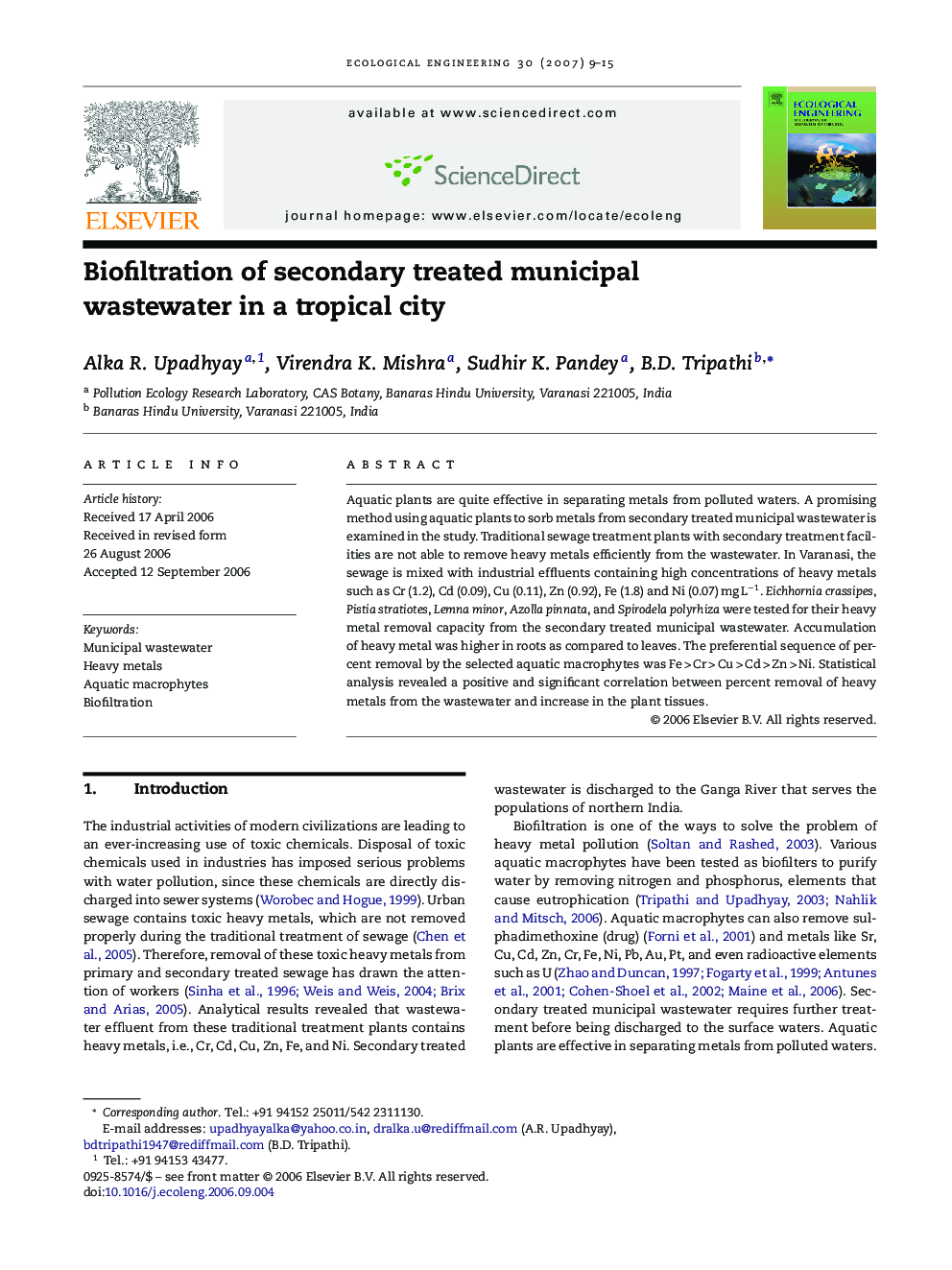| Article ID | Journal | Published Year | Pages | File Type |
|---|---|---|---|---|
| 4391108 | Ecological Engineering | 2007 | 7 Pages |
Aquatic plants are quite effective in separating metals from polluted waters. A promising method using aquatic plants to sorb metals from secondary treated municipal wastewater is examined in the study. Traditional sewage treatment plants with secondary treatment facilities are not able to remove heavy metals efficiently from the wastewater. In Varanasi, the sewage is mixed with industrial effluents containing high concentrations of heavy metals such as Cr (1.2), Cd (0.09), Cu (0.11), Zn (0.92), Fe (1.8) and Ni (0.07) mg L−1. Eichhornia crassipes, Pistia stratiotes, Lemna minor, Azolla pinnata, and Spirodela polyrhiza were tested for their heavy metal removal capacity from the secondary treated municipal wastewater. Accumulation of heavy metal was higher in roots as compared to leaves. The preferential sequence of percent removal by the selected aquatic macrophytes was Fe > Cr > Cu > Cd > Zn > Ni. Statistical analysis revealed a positive and significant correlation between percent removal of heavy metals from the wastewater and increase in the plant tissues.
